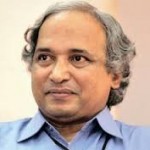PRESS RELEASE
REC extends CSR support to Indian Institute of Science, Bangalore for the project “Establishment of 279 KWp photovoltaic solar panels on 3 no. of sites/ building on department rooftops to generate power for institutional grid and installation of 2200 no. of LED lights at various locations on the IISc,Bangalore campus”.
Rural Electrification Corporation Limited (REC), a Govt. of India Navratna Enterprise, extends financial assistance of Rs. 493.71 Lakhsunder its CSR initiative to Indian Institute of Science, Bangalore, for the project “Establishment of 279 KWp photovoltaic solar panels on 3 no. of sites/building on department rooftops to generate power for institutional grid and installation of 2200 no. of LED lights at various locations on the IISc, Bangalore campus” in Bangalore, Karnataka.
The main objective of this project is to establish photovoltaic solar panels for power generation and LED lighting at various locations on the Indian Institute of Science (IISc), Bangalore campus in order to reduce the campus carbon footprint and dependence on non-renewable energy sources.
The Memorandum of Agreement (MoA) in this regard was executed between REC and IIScin Bangalore on 31st October 2016. ShriP. S.Hariharan, Zonal Manager, Southern Zone, REC and Shri V.Rajarajan, Registrar,IISc, signed the MoA in the presence of Prof. Anurag Kumar, Director of IISc, and other senior officials of REC and IISc
Dr.
Prabeer Barpanda, an Assistant Professor at Materials Research Center, has received the ‘Ross Coffin Purdy Award-2016’ from the American Ceramic Society (ACerS)
Prof. G. Mugesh has been elected a Fellow of Indian National Science Academy (INSA) for the year 2016
Prof. H. S. Atreya, NMR Research Centre, receives Prof. P. K. Bose Memorial Lecture Award (2015) from Indian Chemical Society.
Prof. Anurag Kumar, Director, IISc, has been chosen for the 2016 Distinguished Alumnus Award for Academic Excellence from IIT-Kanpur. Prof. Anurag Kumar obtained his B.Tech. Degree in Electrical Engineering from the Indian Institute of Technology at Kanpur in 1977 and was awarded the President of India’s Gold Medal for his performance.
Prof. Anurag Kumar, Director, IISc, will be honoued with the Dr. Rajkumar Varshney Award for Lifetime Achievement by the Systems Society of India.
Prof. P. Vijay Kumar, ECE, has been elected a Fellow of Indian National Science Academy (INSA) for the year 2016.
Prof.N. Suryaprakash of NMR Research Centre has been conferred with Prof. G.V. Bakore Memorial Award for the year 2015 by the Indian Chemical Society.
Pratiksha Trust, Bangalore, founded by Infosys co-founder Senapathy “Kris” Gopalakrishnan and his wife Mrs Sudha Gopalakrishnan, has set up three Distinguished Chair Professorships at the Indian Institute of Science, Bangalore. The purpose of these Chair Professorships is to bring top-notch researchers in the areas of neuromorphic computing, computational neuroscience, machine learning, and data science foster intense research collaboration between world renowned researchers in these areas and the research community at several departments and centres of the Indian Institute of Science.
The first of these three chairs, “K. Vaidyanathan Distinguished Chair,” was launched on June 22, 2015. Professor Shihab Shamma, Institute of Systems Research, University of Maryland, College Park, USA is the first recipient of the Shri. K. Vaidyanathan Chaired Professorship.
The second of the chair professorships is named after Mrs. Sudha Murthy, Chairperson of the Infosys Foundation, and will be called the “Mrs. Sudha Murthy Distinguished Chair.” It was launched on October 12, 2016 in the the Faculty Hall of IISc. Professor Vasant Honavar, who is currently the Edward Frymoyer Endowed Professor of Information Sciences and Technology and Professor of Computer Science at the Pennsylvania State University, has been chosen for the first Ms. Sudha Murthy Chair Professorship. Prof. Honavar is the Director of the Center for Big Data Analytics and Discovery Informatics and the Director of the Artificial Intelligence Laboratory where he also serves on the faculties of graduate programs in Bioinformatics and Genomics and Neuroscience and co-directs an interdisciplinary PhD program in Biomedical Data Sciences. Prof. Honavar’s expertise is in Artificial Intelligence (especially Machine Learning, Knowledge Representation, and Causal Inference), Bioinformatics, Data Science, Health Informatics, Neural Computing, and Neuroinformatics. Prof. Honavar is known for his work on algorithms for building predictive models from large, distributed, semantically disparate, richly structured (tabular, multi-relational, sequence, text, image, and network) data; logics for selective knowledge sharing; methods for representing and reasoning with qualitative preferences; methods for causal inference; and
applications in bioinformatics (especially characterization and prediction of protein-protein and protein-RNA interactions, interfaces and complexes).
Prof. Amaresh Chakrabarti, Chair of Centre for Product Design and Manufacturing (CPDM) becomes the new Editor of the “Artificial Intelligence for Engineering Design, Ananlysis, and Manufacturing” (AIEDAM) journal, effective January 1st, 2017. He is the first one to assume this position outside North America in its existence of 30 years. As stated in the scope, AIEDAM publishes “significant, original articles about AI theory and applications based on the most up-to-date research in all branches and phases of engineering. Suitable broad topic areas include: analysis and evaluation; selection; configuration and design; manufacturing and assembly; and concurrent engineering.’
Prof. Neelesh B Mehta from the Department of ECE has been selected for the Hari Om Ashram Prerit Vikram Sarabhai Research Award for the year 2015. The award is given alternate years. Prof. Mehta receives the award for Electronics, Informatics, Telematics, and Automation.
IISc organized its first research career fair on Oct 3, 2016, where graduating doctoral students presented their work to representatives of interested industries and also listened to the representatives about opportunities in their industries. The event included presentations from our director and IISc faculty on the various ways in which industry could interact and engage with IISc. Over 100 graduating doctoral students presented their work. A large number of other students from the institute, in various stages of their undergraduate, masters and doctoral degrees, also participated and interacted with industry delegates. Over 100 delegates representing industries from a host of sectors in science and engineering visited IISc for the event. The event was sponsored by Qualcomm and Media.net. It was organized by the Office of Career Counselling and Placement at IISc.
Dr. Prabeer Barpanda, Assistant Professor, Materials Resesarch Centre has received the following awards.
1. ECS Energy Technology Division S. Srinivasan Young Investigator Award- 2016 from the Electrochemical Society, USA.
2. ISE Prize for Applied Electrochemistry-2016 from the International Society of Electrochemistry, Switzerland.
The following faculty members have been selected for the Shanti Swarup
Bhatnagar Prize for Science & Technology (2016):
Partha Sarthi Mukherjee, Department of Inorganic and Physical Chemistry
(Chemical Sciences)
Rishikesh Narayanan, Department of Molecular Biophysics (Biological Sciences)
Sudhir Kumar Vempati, Centre for High Energy Physics (Physical Sciences)
Dr. Prabeer Barpanda, Assistant Professor, Materials Resesarch Centre and Dr. Praveen Kumar, faculty member at the Department of Materials Engineering, have been selected for the NASI Young Scientist Platinum Jubilee Award for 2016
Amit Singh, Assistant Professor at the Department of Molecular and Cell Biology and at the Centre for Infectious Disease Research, has been selected for the NASI-SCOPUS Young Scientist Award (2016) in Biological Sciences
Dr Prabeer Barpanda,
Dr Sai Siva Gorthi,
Dr Praveen Kumar,
Dr Anshu Pandey and
Dr Chandan Saha have received INSA Medal for Young Scientists 2016.
Dr Prabeer Barpanda Materials Research Center, has developed new classes of Li- and Na-cathode materials for next generation battery and storage application.
Dr Sai Siva Gorthi Department of Instrumentation and Applied Physics, has contributed to Innovative Optofluidic Technologies: In-vitro Diagnostics, Green NanoSynthesis, Analyte Detection.
Dr Praveen Kumar Department of Materials Engineering, has discovered electric-field induced changes in mechanical behavior of CNT cellular materials and developed instrumentation to study the behavior in detail.
Dr Anshu Pandey Solid State and Structural Chemistry Unit has outstanding contributions in the area of low threshold quantum dot lasers
Dr Chandan Saha Department of Computer Science and Automation, has worked on arithmetic circuit lower bounds, polynomial identity testing and reconstruction of arithmetic circuits which has led to the discovery of new mathematical techniques and substantial progress on these problems
Dr. Chandan Saha and Dr. Uday Kumar Reddy B, both Assistant Professors, Department of Computer Science and Automation, and Dr.Sai Siva Gorthi, Assistant Professor Department of Instrumentation and Applied Physics, have been selected for receiving *INAE Young Engineer Award* this year.
Prof. Rohini M. Godbole of Centre for High Energy Physics has been awarded prestigious Prof. Archana Sharma Memorial Lecture Award for the year 2016 by National Academy of Sciences, India. The award carries a gold medal, a citation and cash award of Rs 50,000/-.
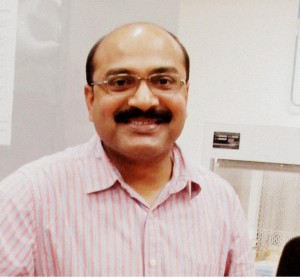 Prof. Ganesh Nagaraju from the Department of Biochemistry was awarded the “National Bioscience Award for Career Development for the year 2015.
Prof. Ganesh Nagaraju from the Department of Biochemistry was awarded the “National Bioscience Award for Career Development for the year 2015.
National Bioscience Award for Career Development (NBACD) recognizes outstanding contributions of young bio-scientists below 45 years through a grant for research projects to help in their career development. This is given by the Department of Biotechnology, Ministry of Science and Technology, Govt. of India.
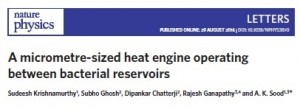 pdf
pdf
Be it in the first automobile ever manufactured – the Ford Model T – or a contemporary family sedan, the basic working principle of the heat engine has remained unchanged since it was first laid down by French Engineer Sadi Carnot in 1824. Heat from the exploding fuel-air mixture inside the engine is partly converted to work, the motion of the piston – and the rest is thrown out as waste heat to the outside colder environment. An essential prerequisite for such an engine to perform work is that in needs to operate between two thermal reservoirs a hot and a cold one. Unlike these familiar large engines, nanometer-sized molecular engines inside the human body, essential for transporting cargo within the cell and for moving our limbs, work at nearly 100% efficiency at a fixed temperature – the normal body temperature of 37.5°C stays put as we use our fingers to scroll through this write up. The functioning of these amazing machines has intrigued scientists for decades.
In a recent research breakthrough, a team of scientists from the Indian Institute of Science and the Jawaharlal Nehru Centre for Advanced Scientific Research in Bangalore suggest a potential physical mechanism that can enhance our understanding of how these molecular machines function. In a series of careful and high precision experiments, the Bangalore team studied the dynamics of an optically trapped colloidal particle, only 1/50th the thickness of the human hair, in a soup of motile bacteria. The bacterial mobility could be turned ON and OFF by very small changes in temperature. As opposed to large engines, micro and nanometersized engines are strongly perturbed by fluctuations in their environments. Thus, even while the temperature of the reservoirs was nearly constant, changes in the nature of fluctuations of the colloidal particle in the ON and OFF states of bacterial activity allowed these researchers to estimate the work done by the colloidal bead. Remarkably, this tiny artificial engine outperformed conventional engines in efficiency. These results were reported in the journal Nature Physics (DOI: 10.1038/nphys3870)
Reference: A Micrometer-sized Engine Operating Between Bacterial Reservoirs, Suddesh Krishnamurthy, Subho Ghosh, Dipankar Chatterji, Rajesh Ganapathy and A K Sood Nature Phys. 2016 (DOI:10.1038/nphys3870)
The first impact factor received for the Journal of the Indian Institute of Science is 0.857 during the current year (2016) by Thomson Reuters.
The Journal of the Indian Institute of Science (JIISc) is being published by IISc since 1914. Its historic significance lies in the fact that this is the second scientific journal to be published from India. Since its origin, research work carried out by the Institute and other institutions around the world was accepted for publication in the journal.
The format of the Journal was changed in 2007 to focus exclusively on invited reviews on specific themes, each issue being guest edited by an eminent researcher donning the mantle of a ‘Guest Editor’. Since then, it became a quarterly journal with large circulation in India and abroad.
The Journal of the Indian Institute of Science is the right medium to reach out Scientific and Educational Institutions, Industrial R&D, Corporate Members, Students, Scientists, Engineers, Engineering college faculties, Decision makers, Project leaders in Science and Technology.
*On celebrating 100 years of publications from its inception, a Special Centenary volume of the Journal featuring papers from the Journal’s first fifty years (1914-1964) along with a short commentary about the papers and their authors was brought out in 2014. *
*This Journal is indexed in the Web of Science.*
*Starting from 2017, the Journal of the Indian Institute of Science will be co-published by the Springer*
Website: Click here.
The Journal of Indian Institute of Science has signed a contract with Springer, which publishes leading International journals in science, technology and medicine, to co-publish the journal from 2017.
IISc celebrated the Independence Day with many faculty, staff, and students actively participating.
The highlight of the programme was a quiz about Indian freedom struggle organized by the Student Council. All questions were answered by people present there, which prompted the Quiz Master to quip that IIScians are not only familiar with science and engineering but also about political history of India during Indian freedom struggle.
The Undergraduate-led magazine Quark was released by the Director, Prof. Anurag Kumar, as in the past years.
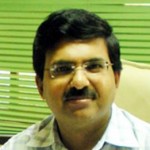 Prof. K N Balaji, Professor, Department of Microbiology and Cell Biology has been awarded the J C Bose Fellowship (June 16, 2016)
Prof. K N Balaji, Professor, Department of Microbiology and Cell Biology has been awarded the J C Bose Fellowship (June 16, 2016)
Class of 2016: Fulfilling the promise
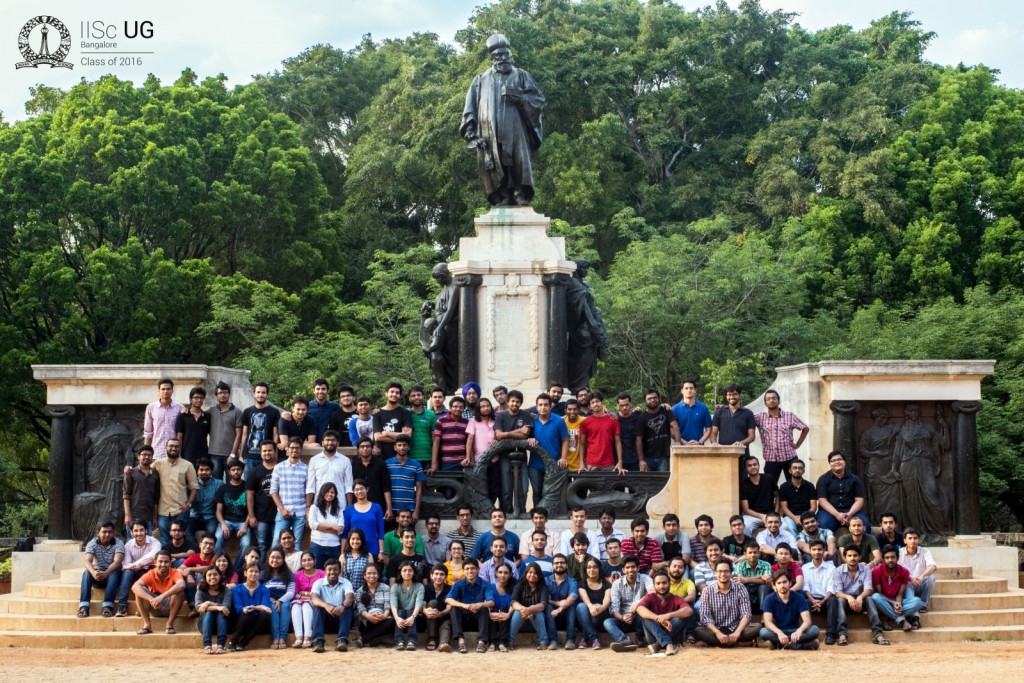
(Anshuman Swain)
As they depart from the nest that has nurtured them for the last four years, CONNECT takes a closer look at where students from the second batch of the BSc (Research) course are headed
SUBHAYAN SAHU*
Come September, Suhas Mahesh, currently a senior undergraduate (UG) student in IISc, will be joining Oxford University for his PhD in condensed matter physics, with the prestigious Rhodes Scholarship under his belt. Only the third Rhodes Scholar1 in the Institute’s 107-year-old history, Suhas, who will graduate later this summer, is part of the second batch of IISc’s four-year Bachelor of Science (Research) programme which started in 2011. Until then, IISc, India’s premier research institution, had focused exclusively on postgraduate education.
Focus on Research
Not surprizingly, a majority of the students graduating this year intend to pursue a career in research. “Like most of my batch mates, I joined IISc with an interest in research [and] the biggest benefit of being a UG student at IISc is the postgraduate nature of the Institute,” says Suhas. Balaji Jagirdar, Professor, Inorganic and Physical Chemistry, and one of the two Associate Deans of the UG Programme, concurs with this view. “Students joining this Institute experience all the research activities that go on here and the path for the students to go into a career in research is well laid out,” he adds.
“…the biggest benefit of being a UG student at IISc is the postgraduate nature of the Institute”
The course work emphasizes hands-on research in world-class laboratories, ensuring that these young minds appreciate the rigors and joys of doing science. Experiments in laboratories compliment lectures taught by faculty members who are among the best researchers in their respective fields. At the end of their first year, students major in any one of the following subjects: Biology, Chemistry, Environmental Science, Materials, Mathematics or Physics. In their final semester, students also do a research project with one of the several faculty members of the Institute. This emphasis on research cannot be overstated, feels Kishalay De, a fourth year Physics major, who is going to Caltech for a PhD in astrophysics.
Broadening Horizons
As part of their curriculum, students are also expected to take courses in engineering and the humanities. The engineering courses allow them to explore the real-life applications of the basic sciences, while the humanities courses give them an opportunity to understand the social context in which science is done. The interdisciplinary nature of the curriculum has been recognized and appreciated by the students. Harsha Gurnani, a graduating Biology major, who has received the sought-after Wellcome Trust Fellowship for her graduate studies, says, “My chosen area of research is neuroscience, a field which is interdisciplinary by itself [and] having both biological and mathematical training is useful for doing this science.”
“My chosen area of research is neuroscience, a field which is interdisciplinary by itself [and] having both biological and mathematical training is useful for doing this science”
Climbing the Research Ladder
De and Gurnani along with many other fourth-year students have already bagged offers from some of the best universities in the world, including Caltech, MIT, Harvard, Cornell, Yale, Berkeley, Princeton, University College London, Max Planck Institutes and Oxford to name a few. Though going abroad to pursue graduate studies is a popular option, a few students are considering doing their PhDs in India. In the past, most Indian universities required a Master’s degree for admission into a PhD programme. “However that situation is changing,” clarifies PS Anil Kumar, also an Associate Dean and Associate Professor, Department of Physics. He adds that opportunities for research for UG students, both within and outside India, will increase in the near future. He says, “More universities are taking note of the UG programme in IISc, and hence the placement scenario is only going to improve with time.”
“More universities are taking note of the UG programme in IISc, and hence the placement scenario is only going to improve with time”
Staying Home for Another Year
But not all students who wish to pursue research are leaving the Institute. At least not yet. After four years of study, IISc’s UG students have the option of staying back for a fifth year to earn to Master’s degree at the Institute itself, an option that a number of graduating students are planning to exercise. According to Anil Kumar, this gives the students an opportunity to investigate their final year research project more deeply and also to explore other avenues that may lie ahead of them. The precedent to continue at IISc for another year was set by the batch of 2011, when 47 out of the 83 enrolled students opted to get a Master’s degree at IISc. One of them, Pranav Mundada, decided, in his final semester, that he wanted to work in new field, and therefore stayed back. This year, he will be going to Princeton University for a PhD to “try to make a fault tolerant quantum computer.”
Changing Tracks
At least three of them from this cohort of graduating students are planning to study a subject in graduate school that they did not major in―economics. Sabareesh Ramachandran, a Mathematics major, is one of these three. He is headed to the London School of Economics for a Master’s in Economics, armed with a Commonwealth Fellowship. “I intend to work in public policy or developmental economics. I think the [Humanities] course on governance made me look at this career option more seriously. I find in economics a nice avenue to work on pertinent social issues while also using the analytical abilities that we developed in our maths courses”, he says.
“I find in economics a nice avenue to work on pertinent social issues while also using the analytical abilities that we developed in our maths courses”
Acing Entrance Exams
Another indicator of the quality of the UG programme is how well IISc’s students have been doing in the national-level entrance exams for graduate programmes. This year, Tapan Goel, a Physics major, has stood first in CSIR NET Physics; Ullas Chembazhi, majoring in Biology, has got the first rank in GATE Biotechnology and Nidhin Kurian, a Materials major, has topped the GATE Materials exam. Many of the top rankers in these entrance exams have also received offers for PhD and Master’s programmes in foreign schools.
Exploring Other Options
Though the UG programme is designed to help young students become researchers, it also provides students with the skills required to go into the private sector. For instance, Abhinav Jain, who graduated last year, is a financial analyst in Ernst and Young. He believes that though taking up a job immediately after graduation is not yet a popular choice, there are ample opportunities in the corporate world for IISc’s UG students. This year saw Fortune 500 companies like Goldman Sachs, Capital One and Walmart coming to IISc, specifically looking to recruit UG students. One such recruit is Sameer Shah, a fifth year student majoring in Mathematics, who was hired by Walmart as a data analyst.
Environment of Excellence
As the programme gets older by a year, UG students at IISc, enriched by its environment of excellence in research and pedagogy, have more than just lived up to the faith imposed on them by the Institute. Their stories of success are testament to the quality of education they have received.
Suhas, who also moonlights as a connoisseur of classical languages, ends with an old Sanskrit adage:
santaḥ sadābhigantavyā yadi nopadiśantyapi ।
yāstu svairakathāsteṣāṃ upadeśā bhavanti tāḥ ॥
“Keep the company of the wise, even if they aren’t teaching lessons.
For whatever they tell in passing, they turn out to be lessons.”
1Source: Wikipedia
*Subhayan Sahu is a third year UG student
Infosys Foundation Funding for Infectious Disease Research at IISc
Sudhi Oberoi*
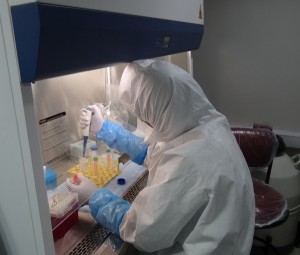
Courtesy: CIDR
The Infosys Foundation has announced a financial grant to the Centre for Infectious Disease Research (CIDR) at IISc to help broaden its research and also provide additional infrastructural support to the Centre.
Infectious diseases like tuberculosis (TB), malaria, HIV/AIDS, hepatitis and more recently SARS, Ebola and Zika virus diseases are posing a threat to human health around the world. With human-induced changes to the environment and increased globalization, pathogens have become more likely to switch hosts and spread across traditional geographic barriers, causing not just more frequent disease outbreaks, but also epidemics. While some infectious diseases have been well researched and can be cured or at least prevented, many others, particularly tropical diseases, have received far less attention. A major goal of CIDR, set up in 2013, is to help plug this gap and address questions in infectious disease research that are more relevant to countries like India.
Currently, CIDR consists of a central lab, a state-of-the-art bio containment space known as the Biosafety Level-3 (BSL-3) facility and office space for its researchers. In the past few months, the Centre has been looking to expand the scope of its research and improve its infrastructure, a point that was highlighted by G Padmanabhan, a former Director of IISc and currently an Emeritus Professor at the Department of Biochemistry, during a session of the Global Alumni Meet of IISc in June 2015.
Speaking to CONNECT, Dipankar Nandi, a professor at the Department of Biochemistry and Convenor of the committee that runs CIDR, said that Sudha Murty (Chairperson, Infosys Foundation, and an alumnus of IISc), who was chairing this session, immediately offered to help CIDR in its plans for expansion.
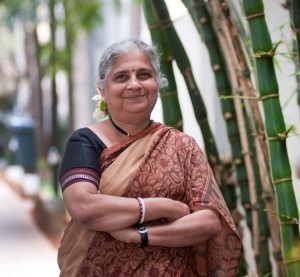
Sudha Murty, Chairperson, Infosys Foundation India (Courtesy: INFOSYS FOUNDATION)
Revealing why she was motivated to help infectious disease research, Murty, in an interview to CONNECT, said,“Infectious diseases are increasing day by day, challenging health of our country.” To address this challenge, she stressed upon the importance of advancing fundamental research in the area of infectious diseases and also developing new drugs and diagnostics.
The support from Infosys Foundation, which will be spread over five years, will help in building an annexe to the Centre resulting in three laboratories and office space.
In addition, a small animal BSL-3 facility for research will be built. Finally, the research team at CIDR will be increased by recruiting two Infosys Fellows who will perform independent research. Some of the money will also be used to pursue another important goal of the Centre: translational research. “One big idea we have is that this would not just allow building infrastructure, but will also open avenues for translational research in infectious diseases,” Nandi added.
The Centre, which is already working with researchers from all over the Institute to ensure an interdisciplinary approach to studying infectious diseases, also plans to organise seminars to increase public awareness on the subject.
*Sudhi Oberoi is a Project Trainee at the Archives and Publications Cell (APC)
IISc signs collaborative pacts with industry giants
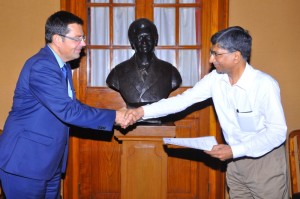
Thales Vice-President and Country Director Mr. Antoine Caput with IISc Director Anurag Kumar at the MoU signing. (Courtesy: Thales India)
October saw IISc signing MoUs with two industry partners as part of its efforts to encourage translational research. The first collaboration was sealed with the German technology giant Bosch on 28 October, and the papers were later exchanged in the presence of the President of India, Shri Pranab Mukherjee. The second MoU was signed two days later with Centre national de la recherche scientifique (CNRS) – the government research organization in France — and Thales group – a French defence technology company.
“In recent years, the industry has sponsored translational research centres [at IISc],” said the Director, Anurag Kumar. “While fundamental research in science and engineering remains IISc’s core value, the translational aspect is expected to be strengthened,” he added.
“While fundamental research in science and engineering remains IISc’s core value, the translational aspect is expected to be strengthened”
IISc had, in 2011, received a philanthropic grant from the Robert Bosch Foundation which enabled it to set up the Robert Bosch Centre for Cyber Physical Systems, which focuses on interdisciplinary research. The current MoU, spanning over the next five years, connects IISc with Bosch Engineering India, for work on projects that deliver health, water, transport and energy solutions relevant for India. On-going discussions will flesh out the details of these planned projects.
“The specific technologies will include sensors, wireless communications, distributed signal processing, data analytics, inference, and control, in the framework of the Internet of Things,” said Anurag Kumar.
IISc also strengthened its research ties with France by partnering in a fellowship scheme which will allow PhD students here to work researchers in France, who will be matched based on shared research interests. These will be in the fields of advanced electronics systems, electromagnetism, antennas, meta-materials and nanotechnology, said Srini Kaveri, Director of CNRS in India. Initially, four PhD students registered with IISc will be selected for the fellowship. After completing their course work and clearing the comprehensive exam, they will have the opportunity to work with collaborators at French research labs, and also use the research facility at Thales, France.
This fellowship scheme being sponsored by the Thales group will provide students with a contingency fund to meet travel and living expenses at the institute abroad. The participating organizations are also discussing possibilities of students returning to visit Thales, France after obtaining their doctoral degree from IISc.
“The idea of the present MoU between CNRS (and associated universities and schools in France)/Thales and IISc is a natural extension of the international collaborative efforts of these institutions,” said Kaveri. Common and complementary research interests and objectives of the participating labs have made this partnership possible, he added.
Bharti Dharapuram





 pdf
pdf
